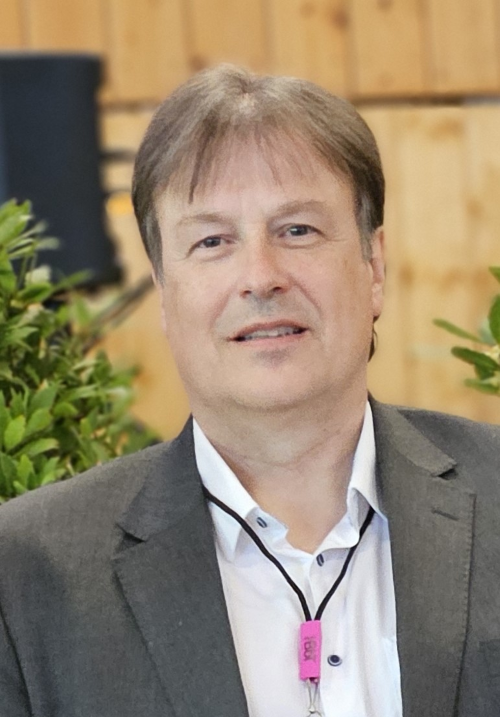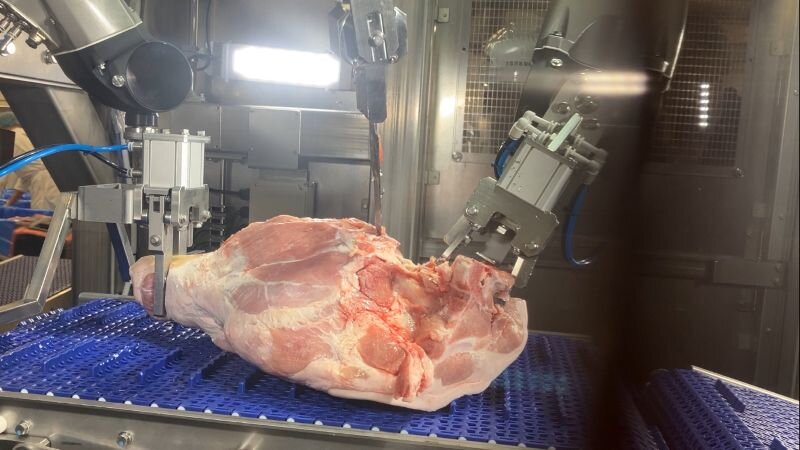MAYEKAWA develops advanced automation technology for meat processing, focusing on efficiency, hygiene, and working conditions. The company creates robotic solutions capable of handling irregularly shaped and flexible meat cuts from pork, chicken, and turkey—tasks previously only achievable through manual labor or large-scale factories unsuitable for Norwegian production volumes.

Ole Arne Alvseike, Director of Research and Food Safety at Animalia, is the project manager. Photo: Animalia
“We’ve been aware of MAYEKAWA’s solutions for a long time. In 2020, I attended the IPPE trade show in Atlanta with the primary goal of establishing contact with them. NMBU and Animalia had just launched the major RoButcher project, which also focused on automation technology for slaughterhouses. Independently, we both concluded that solutions should be organized in cells to develop scalable systems—automation solutions that can also work in Norway. The contact has gradually developed and is now formalized into a partnership,” says Ole Arne Alvseike, Director of Research and Food Safety at Animalia, who leads the project on behalf of Animalia.
Fatland Oslo provides facilities, raw materials, and testing, while Animalia leads the project in terms of training, development, and research.
“Animalia will coordinate and support research and development efforts. The goal is to utilize existing programs and compare them with traditional pork deboning,” explains Alvseike.
“There’s an expectation to develop new, improved programs tailored to Fatland’s needs in collaboration with MAYEKAWA’s engineers. Fatland wants the pilot facility to be an open arena for the industry, and Animalia will also coordinate recruitment and internships for students who want to work on their projects in collaboration with the industry. I believe we’ll find challenging and interesting opportunities across various disciplines—from vocational training to PhD-level research,” Alvseike elaborates.
 MAYEKAWA’s automation technology is being tested at Fatland in Oslo. Photo: Animalia
MAYEKAWA’s automation technology is being tested at Fatland in Oslo. Photo: Animalia
The technology developed by MAYEKAWA uses X-ray and 3D imaging to analyze the meat before it reaches the robot. Slaughterhouse workers often perform repetitive and strenuous tasks such as cutting and lifting, which can lead to strain injuries like tendonitis, muscle pain, and long-term wear. This type of technology could help alleviate much of that burden.
“There’s a major challenge in Norway and other industrialized countries in recruiting labor. This affects our sector but is a common issue across most of the manufacturing industry. So yes, the work will change, with fewer cutters needed, but the expertise in cutting will still be essential. That’s why Fatland wants the facility to be a place where operators and industry leaders can learn to work with the technology. This openness makes me believe we have a unique opportunity to develop a strong Norwegian environment in this field through international collaboration,” says Alvseike.
He emphasizes that while the opportunity is unique, he remains cautious:
“It’s demanding work ahead. We don’t expect to foresee all challenges and problems at this stage, but that’s also what makes it exciting for innovative professionals,” concludes Ole Arne Alvseike from Animalia.